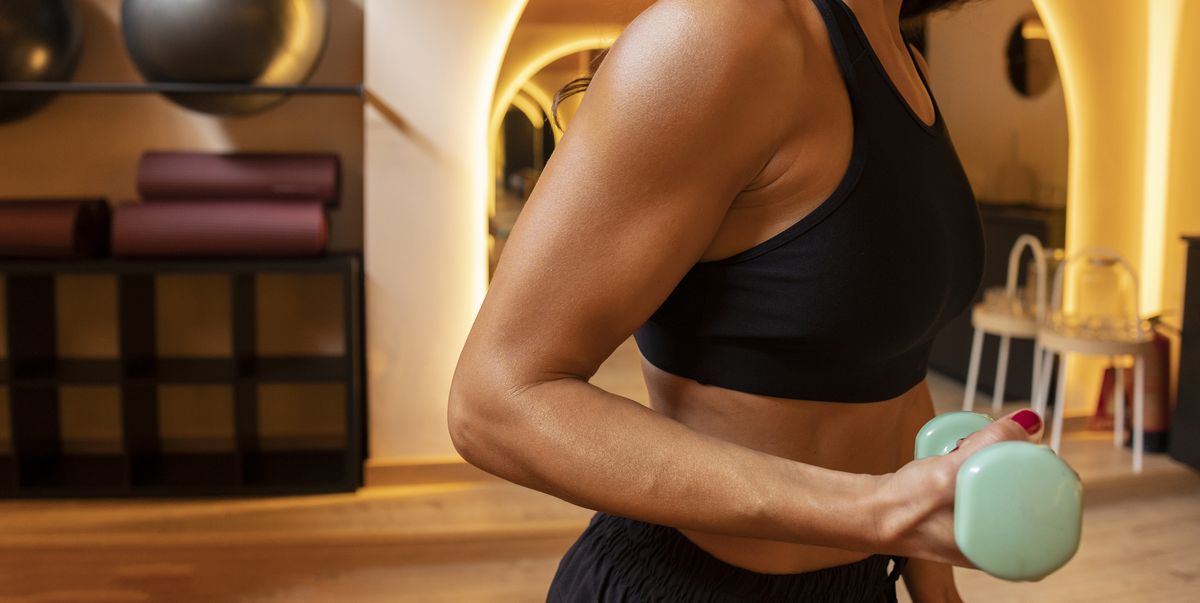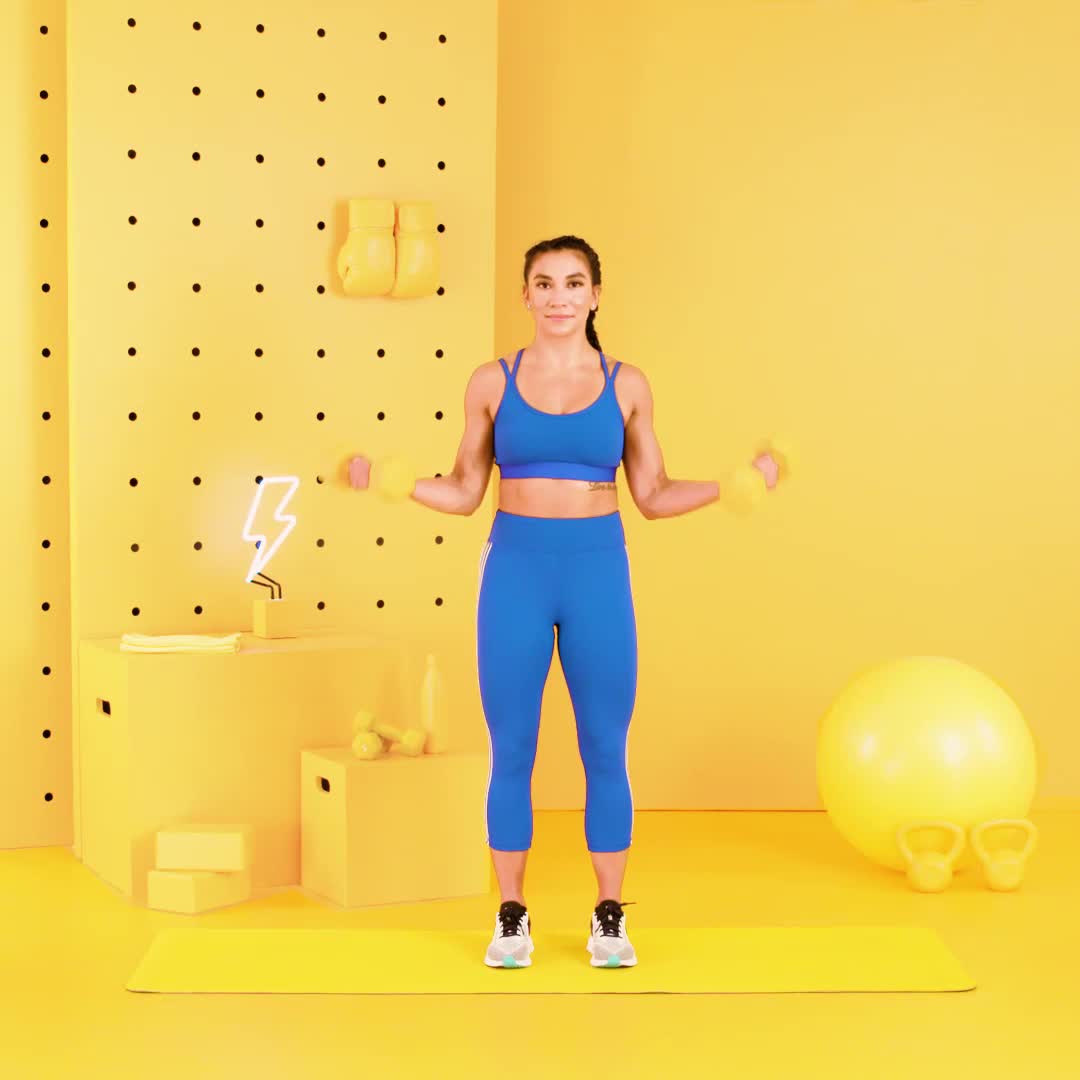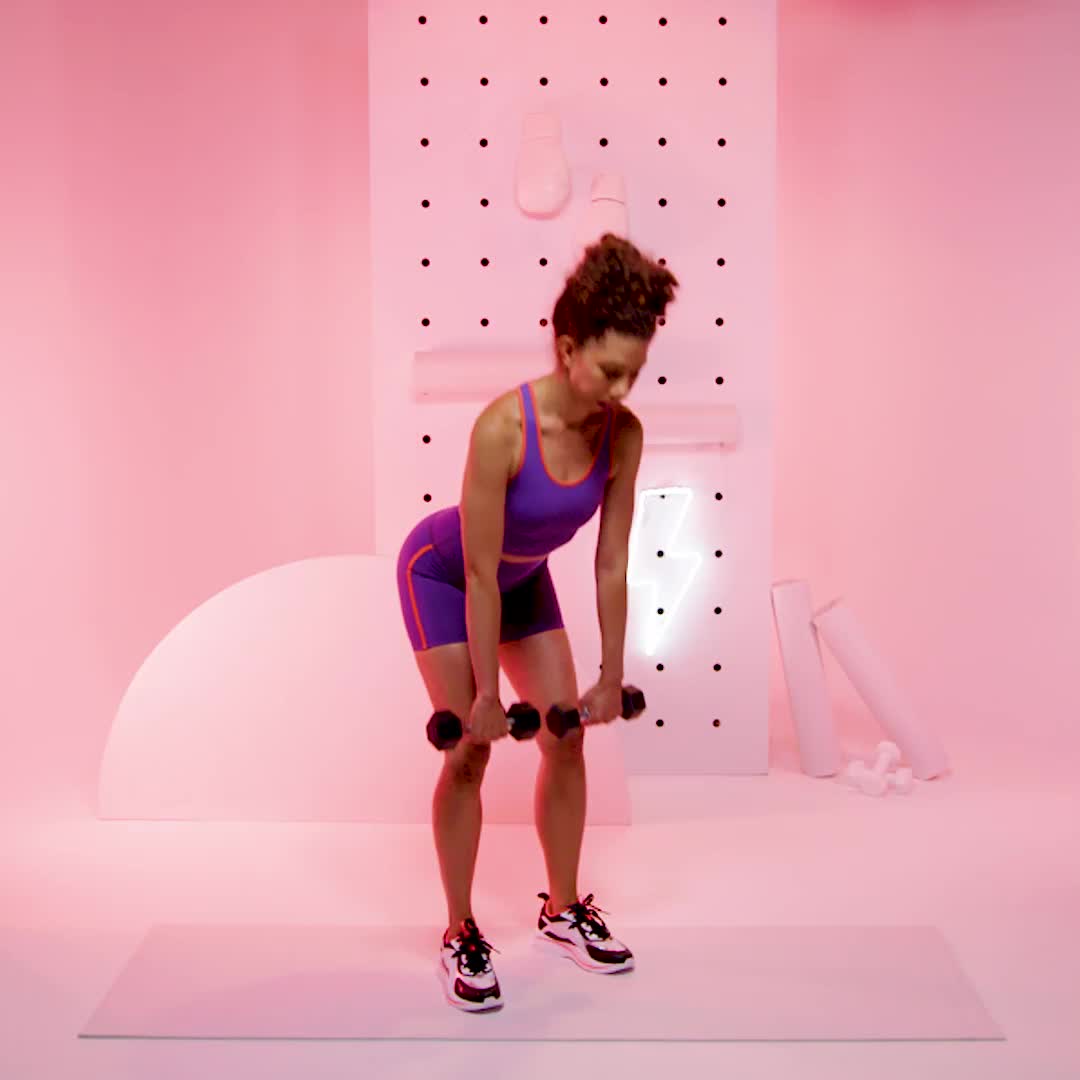If you tend to breeze through the “easy” part of an exercise—like lowering into a squat or letting your dumbbells drop after a curl—you might be missing a major opportunity to build strength.
That sneaky phase of movement is called the eccentric portion, and it’s just as important (if not more) than the lift itself, known as the concentric phase, says Chris Chang, CPT, a fitness trainer and director of exercise science at Ergatta.
Eccentric movement is the controlled lengthening of a muscle under tension (like lowering a dumbbell), while concentric movement is the shortening of a muscle as it contracts (when you’re lifting the DB). “A great way to visualize the types of contractions is to think about a rubber band stretching and shortening,” says Chang.
Most people only pay attention to the effort it takes to push, press, or pull. But research shows the lowering, lengthening phase can actually lead to greater strength gains and muscle growth when done with control.
Ahead, learn how both eccentric and concentric contractions work, why they matter, and how to use them to maximize every rep.
Meet the expert: Chris Chang, CPT, a fitness trainer and director of exercise science at Ergatta.
Why Both Types Of Movement Matter
Think of concentric and eccentric movements like hiking up and down a mountain. Most people focus on the effort it takes to reach the summit—but anyone who’s done a tough trail knows the descent can be just as grueling, if not more.
The same goes for strength training: the upward (concentric) phase demands more energy, while the downward (eccentric) phase creates more muscle tension and micro-damage, says Chang. “Concentric contractions require more energy but are generally less damaging to the muscle,” he says. “Eccentric contractions generate greater force and micro-damage to muscle fibers, which promotes muscle growth and can cause soreness.”
Here are some common benefits of each phase:
Key Benefits Of Concentric Movement
- It helps build strength. Concentric contractions are the foundation of most strength exercises. You need to be able to move a load to build strength, and the concentric phase is where that effort happens, Chang says. Pushing through the concentric portion—like pressing a barbell overhead or standing up from a squat—is what teaches your body to generate the force necessary to lift heavier over time.
- It helps you build power. “If you want to generate force quickly for a sport, you need to perform the concentric phase quickly to train that,” Chang says. That’s especially important for activities that involve sprinting, jumping, or throwing—where explosive movement matters most.
- It’s generally less damaging to your muscles than eccentric movement. “Because it is less damaging to your muscles, performing concentric-only exercises can be a good way to get a workout in without taking away from your recovery,” he says. That makes concentric-focused training useful during deload weeks or for beginners easing into resistance training—when avoiding excess soreness is key.
Key Benefits Of Eccentric Movement
- It’s especially effective for building muscle. “Eccentric movements are where much of the muscle-building magic happens,” says Chang. That’s because they create more tension in the muscle fibers and lead to greater micro-tears, which in turn stimulate growth. Eccentric training also helps strengthen tendons and connective tissue.
- It may promote healthy blood pressure. A 2023 study in the Journal of Sports Science & Medicine found that eccentric exercises led to greater reductions in brachial blood pressure compared to concentric movements, suggesting a potential cardiovascular benefit.
- It improves your ability to absorb force. This is key for injury prevention, says Chang. “Many injuries occur when the body encounters a force it can’t absorb. Eccentric training teaches your muscles and tendons to better handle those forces.”
- It often feels easier—so you may be able to push harder. The same 2023 study mentioned above found that people tend to perceive eccentric exercise as less taxing than concentric, even when the muscle is working just as hard. That lower perceived effort may allow you to do more reps or lift heavier during eccentric-focused sets.
Why It’s So Easy To Neglect The Eccentric Portion
While the eccentric phase is crucial for building strength and control, many exercisers unintentionally skip over it. “Most people focus on lifting the weight during the concentric phase and then let gravity do the work on the way down,” says Chang.
Take a biceps curl, for example: If you drive the dumbbell up but then let it drop without control, you’re missing out on a big opportunity to stimulate growth and improve muscle function.
“Slowing down the eccentric portion increases time under tension, which is a major driver of muscle growth,” Chang explains. “It also improves control, helping you avoid injury by engaging stabilizer muscles and reinforcing proper form under load.”
In fact, a study in the Journal of Physiology found that increasing time under tension significantly boosts muscle protein synthesis—a key process in muscle building.
How To Train Smarter With Eccentric And Concentric Moves
Both concentric and eccentric movements play an important role in strength training—you just need to know when and how to emphasize each. Here’s how to tailor your training based on your fitness goals:
- For hypertrophy (muscle growth): To maximize muscle growth, use a 1:3 tempo—one second on the concentric (lifting) phase and three seconds on the eccentric (lowering) phase. “In a biceps curl, that means curling the dumbbell up in one second, then lowering it slowly for three,” says Chang. “That controlled eccentric increases muscle damage—in a good way—which triggers growth.” This method can be applied across most strength moves: focus on an explosive lift, then a slow, controlled lower.
- For power training: If your goal is speed and explosiveness, prioritize the concentric phase. “Focus on producing force as quickly as possible,” Chang says. That might look like an explosive push-up, a high box jump, or a fast, heavy squat. In this case, the eccentric portion can often be shortened or even skipped entirely—think quick resets between reps—to keep the focus on generating power.
- For strength and control: Rushing through reps can lead to sloppy form and mask weaknesses, warns Chang. “You might unknowingly compensate by using your back to lift a deadlift instead of your glutes and hamstrings,” he says. The fix? Slow down both phases. “Try a two- to three-second concentric tempo, focusing on smooth movement and solid alignment.” This forces you to engage the right muscles and correct imbalances.
Additionally, very slow eccentrics can be especially useful for improving tendon strength and force absorption. “You often see basketball players who can jump high but get injured on landings,” Chang says. “That’s because they can produce force well (concentric), but haven’t trained to absorb it (eccentric).”
The Best Concentric And Eccentric Movements To Build Strength And Muscle
You can apply eccentric and concentric principles to nearly any strength move—but some exercises highlight the unique benefits of each phase especially well. Here are four trainer-recommended moves to help you train smarter:
Bent Over Row
Best for: Eccentric control and posture support
How to:
- Stand with feet hip-width. Hold one dumbbell in each hand outside thighs.
- Hinge at hips with knees slightly bent and arms just in front of legs. Keep back flat, torso parallel to floor or at a 45-degree angle, and core engaged.
- Drive elbows back toward hip with weights in hand, feeling shoulder blades squeeze together, then slowly lower back down. That’s 1 rep.
Pro tip: “Don’t pause at the start—slow, continuous motion challenges your muscles while reinforcing proper form,” says Chang.
Supinated Biceps Curl
Best for: Targeted eccentric overload for muscle growth
How to:
- Hold a pair of dumbbells at sides, palms facing forward, and keep back straight and chest up.
- Without moving upper arms, bend elbows and curl the weights toward shoulders.
- Slowly lower the weights back to the starting position, straightening arms completely. That’s 1 rep.
Pro tip: “Focusing on the eccentric phase like this creates more muscle tension, which promotes growth,” says Chang.
Dumbbell Bench Press
Best for: Combining explosive power with controlled strength
How to:
- Lie on floor face-up with knees bent and feet planted flat on floor.
- Holding a dumbbell in each hand, press weights up toward ceiling and extend arms directly above shoulders, palms facing toes.
- Slowly bend elbows, lowering weights out to side until elbows form 90-degree angles. Upper arms may tap floor in bottom position.
- Drive dumbbells back up to starting position. That’s 1 rep.
Romanian Deadlift
Best for: Power and fatigue management
How to:
- Hold a dumbbell in each hand, palms facing thighs and feet shoulder-width.
- Keeping core tight and spine neutral, hinge hips back, bending knees slightly as you lower the weights along front of shins.
- When you feel a hamstring stretch, stop and reverse movement, squeezing glutes to return to standing. That’s 1 rep.
Pro tip: “This is a smart strategy when training for max power or preserving recovery,” Chang says.

Julia Sullivan, CPT, is a New York City-based writer, indoor rowing instructor, outdoor enthusiast, newbie powerlifter, and devoted cat mother. Her work has been published in Women’s Health, SELF, Health, Huffington Post, and more. She holds a B.A. in journalism and gender studies from Arizona State University and a personal training certificate from the American Council on Exercise. When she’s not covering the latest health and wellness trends, you can find her hitting the hiking trails, working toward her deadlift goal of 400 pounds, and forcefully hugging her cat, Jeeves, against his will.
Read the full article here







